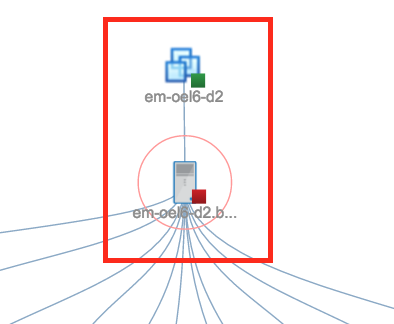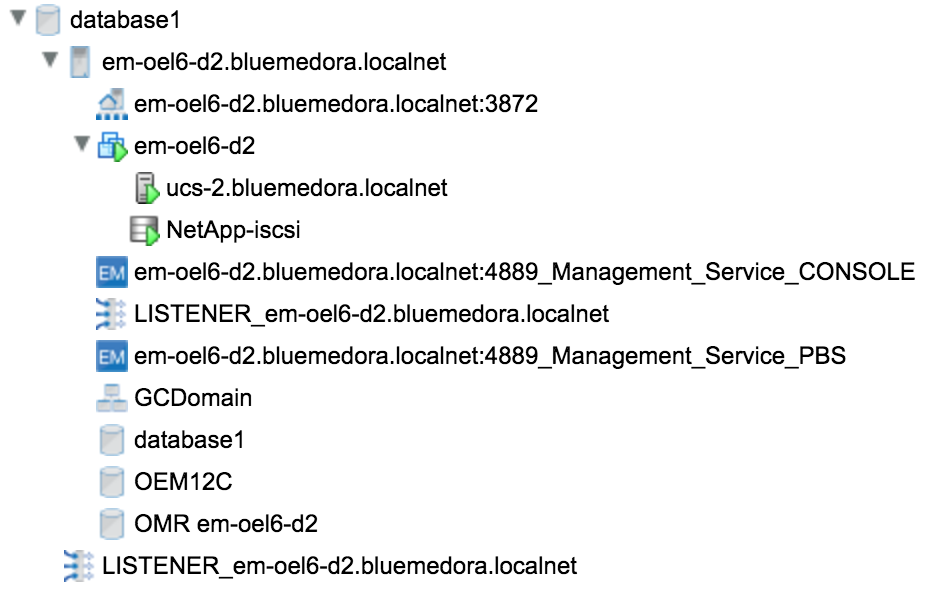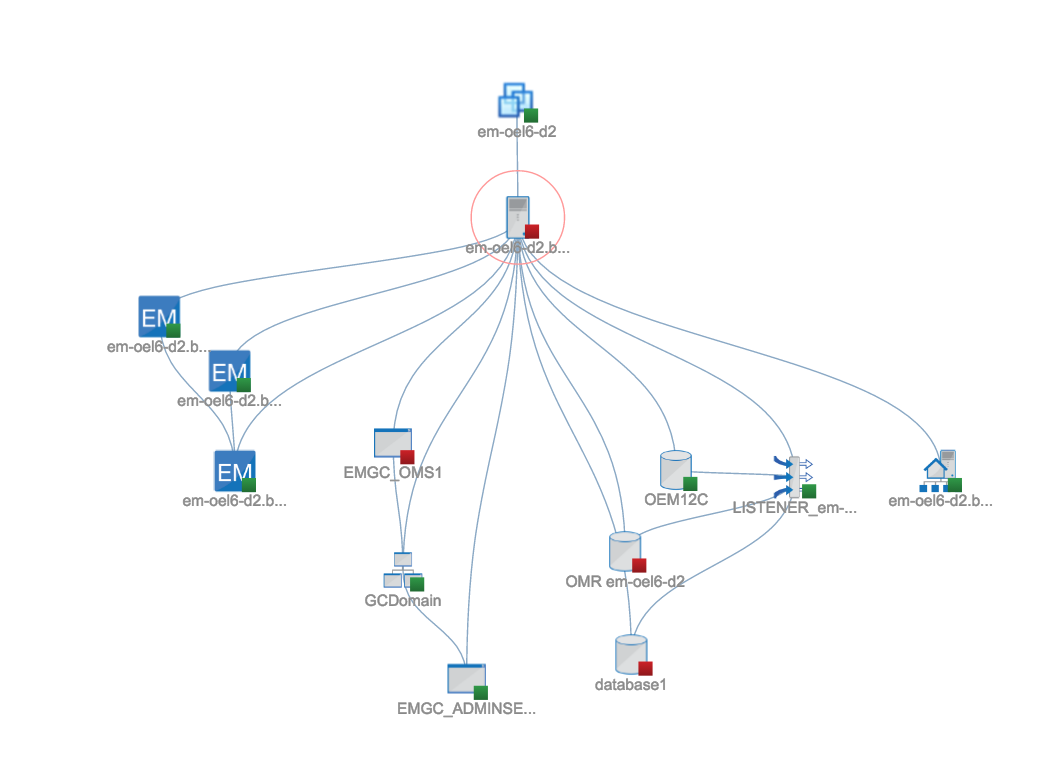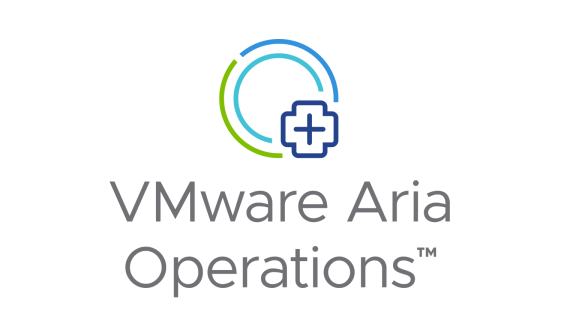Kyle Wassink, Blue Medora
There are two key relationships that need to be identified in order to provide comprehensive Oracle monitoring in VMware vRealize Operations (vROps): relationships within the Oracle stack, and relationships between Oracle and the VMware stack. When combined, these relationships give you a complete picture of the Oracle on VMware stack for your environment. Let’s take a look at how we can identify these relationships with simple Relationship Mapping using vROps.
Relationships within the Oracle Stack
Identifying the first key relationships, those within the Oracle stack, is straightforward. The Oracle Management Repository (OMR), which is queried by the Management Pack for Oracle Enterprise Manager, contains a database view named MGMT$TARGET_ASSOCIATIONS. This view simply copies over all of the relationships that Oracle EM has already created in their platform, making Oracle relationship mapping readily available in vROps.
Figure 1 – The Oracle Host (top) and the related Oracle resources in a vROps hierarchy
Relationship Mapping between Oracle and VMware
The second key relationship ties the Oracle and VMware stacks together. This connection happens between the Oracle Host (the Operating System target) and the VMware Virtual Machine. Configuration values (for example, host name) of the Oracle Host are queried and compared with those of virtual machines in vROps to find matches. If a match is found, a relationship connecting the two resources is created in vROps.
Figure 2 – A Virtual Machine (top) and Oracle Host (bottom) that have a relationship in vROps
Adding the relationship between an Oracle Host and VMware Virtual Machine lets you traverse from the top of one stack to the other, and vice versa. This is made even easier in vROps by the navigation tree, which will automatically traverse and extrapolate indirect relationships and make them readily available.
For example, if you have an Oracle Database running on an Operating System (represented by the Oracle Host target type), there would be an entry in MGMT$TARGET_ASSOCIATIONS that says the Oracle Database X runs on Oracle Host Y. This relationship is migrated into vROps where the Oracle Database and Oracle Host resources will have a parent-child relationship.
Figure 3 – One of the many ways to traverse up and down the Oracle on VMware stack using the navigation tree
Why Oracle-to-VMware Relationship Mapping is Important
When Operating Systems (OS) are virtualized with VMware, the OS is left in the dark. It is not aware that it is now sharing CPU and memory resources with other virtual machines, and thus can’t accurately report its resource consumption. This is a big problem for mission-critical workloads that rely on a virtualized Oracle Database or application.
Figure 4 – The complete hierarchy from VMware Virtual Machine to Oracle Host to the related Oracle resources
For example, the OS may have sent some commands for the CPU to process and it is now waiting to get the response back. The OS thinks it is currently using CPU resources, however, from the VMware perspective you might find that the virtual machine is reporting CPU Ready (waiting for access to CPU) while other virtual machines are experiencing CPU spikes and using all of the available cycles. This scenario is not visible to the OS but is obvious when looking at the VMware layers.
Figure 5 – An example dashboard where the Oracle Host and VMware Virtual Machine are automatically identified based on their relationship to the selected Oracle Database
This problem between OS and virtualization is easily overcome with vROps and the Oracle EM Management Pack. If you want to add Oracle relationships to your environment, please visit the solution page for the Management Pack for Oracle Enterprise Manager.
For more information on vRealize Operations visit vmware.com















